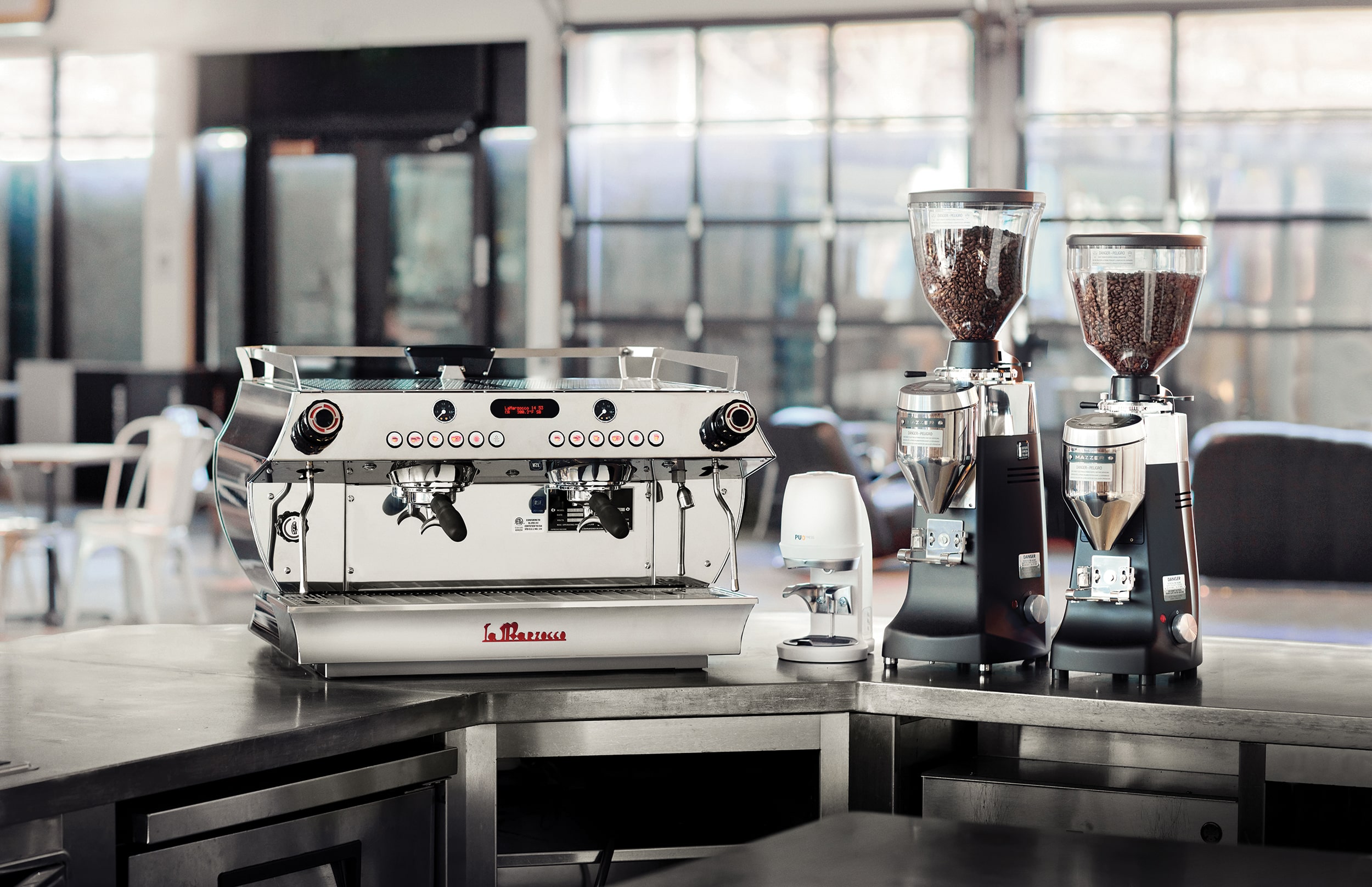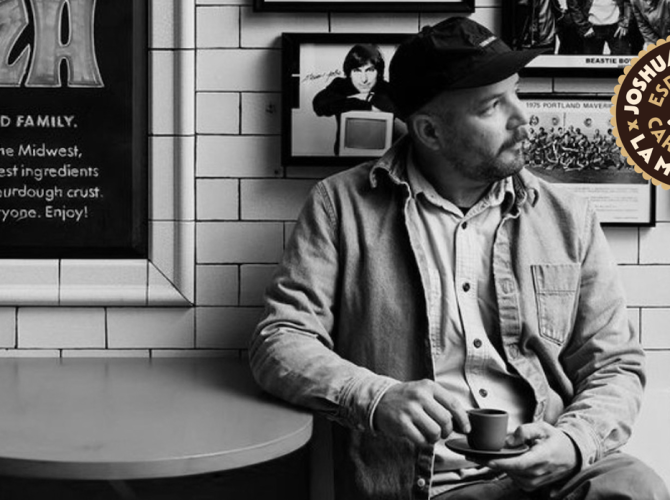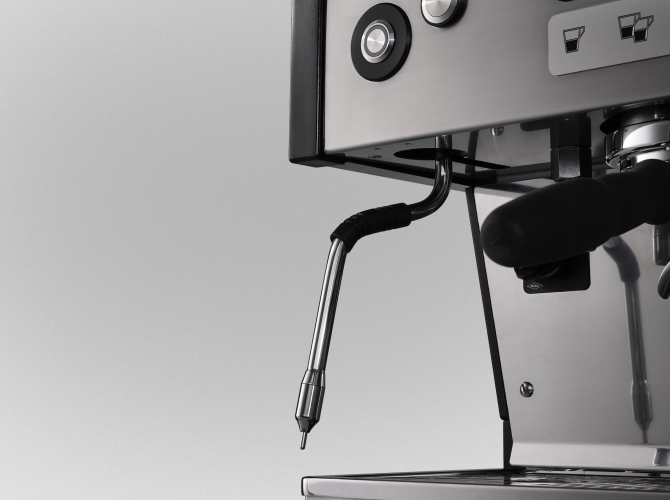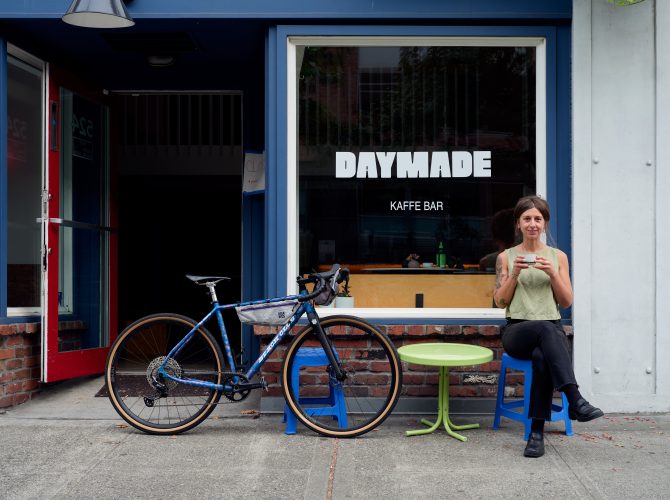In a coffee business, how (and how quickly) drinks are made and served to your customers is vital to your success. In this post, we’ll offer a foundation for thinking about that setup and how to achieve your goals.
Intro to Espresso Setups
Building an espresso-based beverage requires a high quality grinder to deliver ground coffee into the portafilter; a way to tamp those grounds into a uniform puck of coffee; and an espresso machine to turn that puck into delicious espresso.
The way you combine those three elements, and the equipment you choose to meet each of those needs, is what we call a setup. Variations in your setup will help you meet different goals and balance different priorities according to your business model. By optimizing your equipment set and placement of tools, you can provide a fast and friendly customer experience while providing a safe working environment for your staff.
Goals of an Espresso Setup
When designing your space, you’ll need to consider each element of the barista’s process in building a beverage. What is their flow from task to task? How do they move through the space? Which arrangement is most ergonomic — and which arrangement gets your customer their order fastest? Are they the same?
By considering these workflow elements, you can design an intentional space that balances your customers’ desire for quick, friendly service with your barista’s health and well-being.
Elements and Considerations
Grinder
A key consideration when it comes to choosing the grinder for your setup is grind speed. A fast grinder with high accuracy and a programmable dose shaves valuable seconds off a barista’s workflow.
If you are a very high volume shop, you will also want to ensure the hopper is sufficiently large so that your baristas won’t need to refill from bulk bags too often. Don’t forget that you’ll need a second grinder for decaf – or a double hopper grinder like the Swift Classic.
Tamping
Once coffee is ground into the portafilter, it needs to be tamped to properly extract in the espresso machine. Traditional tamping is done with a barista’s body turned perpendicular to the counter, a tamper raised at a 90 degree angle, and even pressure applied downward onto the bed of grounds. This process requires multiple twists, turns, and points of impact that can cause repetitive stress injuries over time. That’s one reason we love the PuqPress, a machine that removes those unnecessary motions and simplifies tamping.
However you decide to tamp, the tamping “station” should be as close to the grinder as possible, ideally between the grinder and the espresso machine. You’ll also need a knock box nearby for spent pucks and extra grinds.
Espresso Machine
The heart of your coffee business is the espresso machine, and should provide technology and features that allow your baristas to pull shot after beautiful shot through your busiest rush. Additional features like auto-volumetrics, cool-touch steam wands, auto-backflush and built-in scales can help your baristas work more accurately and efficiently.
elegant design married with proven reliability: the gb5 s setup
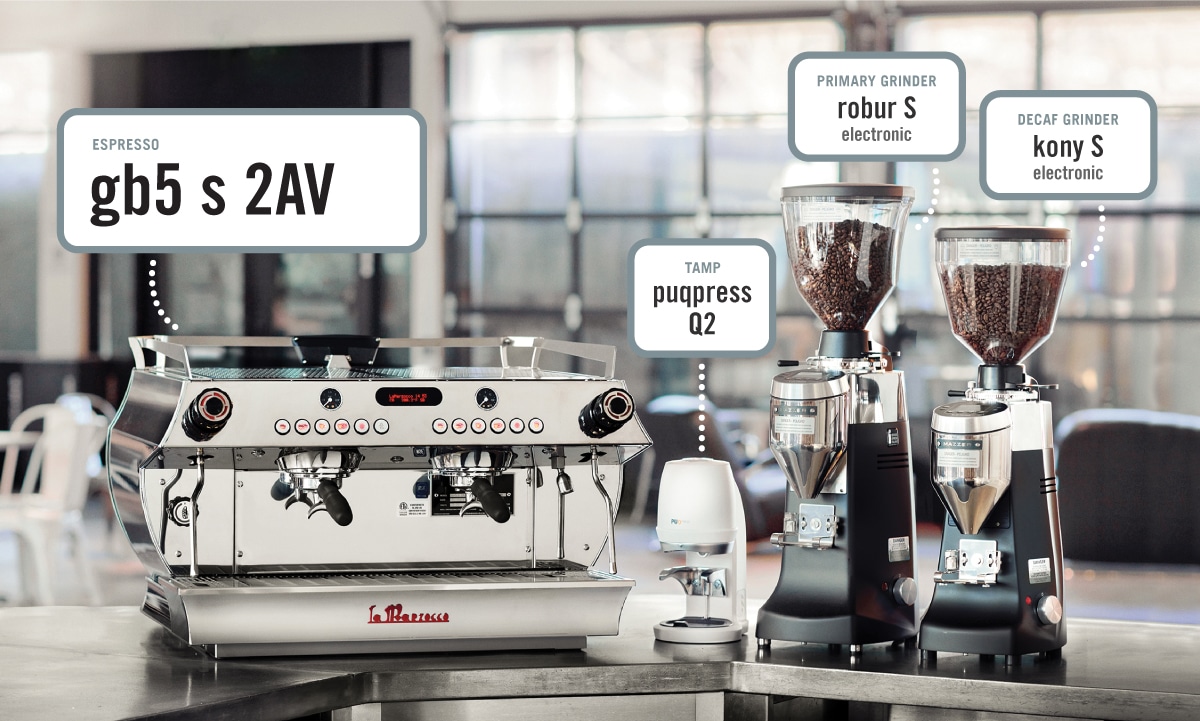
In this setup, the new GB5 S is installed alongside a Robur S for espresso coffee, Kony S for decaf, and a Puqpress Q2 for tamping. Placing the Puqpress between the machine and the grinder ensures the barista will move easily through the space from grinding to tamping to brewing.
We’ve shown the setup with grinders on the right; depending on your bar design, you could mirror this arrangement with PuqPress directly to the left of the machine, followed by the grinders.
This setup has been optimized for:
• high volume – quickly and efficiently making a high number of drinks per hour
• ergonomics – ensure smooth barista workflow from one step to the next, minimizing unnecessary movements
• consistency – keep each shot the same as the last with reliable auto-volumetrics, PuqPress for uniform tamping, and dose control in the grinder
Grinding: Robur S
Mazzer has been rolling out improvements to its most popular grinders and we’ve been impressed with the updates and innovations demonstrated in this line. The new grinders use the letters “S” and “V” to differentiate from the original models: S grinders have conical burrs and V grinders have flat burrs.
New grinder improvements include:
• 50% reduction in retention per dose
• a redesigned and intuitive user interface
• a new grinding chamber design that is easier to clean, without losing grinding settings
• push-button on-demand dosing activation and handsfree portafilter rest
The Robur S is a fast, high-performing grinder with 71mm burrs that can crank through an 18 gram dose in just under 4 seconds. That’s one reason it was our grinder of choice for Crush the Rush 2 — it kept our barista teams moving fast and in spec all summer.
Grinding: Kony S
The Kony, with 63mm burrs, is smaller and lighter than the Robur S, and is a great choice for a second grinder or for shops looking for a smaller countertop footprint for their grinders. Kony S grind speeds clock in closer to 5 seconds for 18g.
Tamping: Puqpress Q2
The Puqpress is a bar tool that improves workflow and ergonomics for baristas. It’s a small machine that sits next to your grinder and automatically tamps the bed of grounds when the barista inserts the portafilter. This 3-second process saves multiple movements for the barista, improving speed while also reducing bending and twisting motions that can cause injury over time. When we ran barista ergonomics clinics during Crush the Rush 2, the physical therapists we worked with in each city remarked on how valuable a Puqpress would be for reducing repetitive stress injuries.
Espresso: GB5 S 2AV
Equipped with proprietary La Marzocco electronics and advanced temperature stability, the GB5 S combines classical European design with cutting edge performance. The machine provides the barista control over boiler temperature, brewing volume, hot water tap dose, automatic cleaning cycles and more to keep high quality coffee flowing even during the busiest hours.
putting it all together: what is the customer experience your cafe delivers?
Imagine your perfect cafe experience as a customer. Is your drink prepared perfectly? Delivered swiftly? Maybe with a friendly hello or quick conversation with your barista? Many customers share these preferences when choosing where to go for coffee.
Your setup, in many ways, determines the customer experience. The wrong setup for a high volume space can lead to unhappy customers; a complicated setup in an environment with regular or cyclical staff turnover can be difficult to maintain. A grinder that doses quickly and accurately; an auto-tamping tool; and a top of the line espresso machine will help you achieve the customer experience you want.
Share your goals, vision, and priorities with your reseller partner to determine the setup that makes the most sense for your business.
